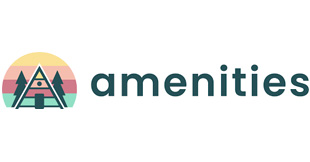One of the ongoing questions at the recently-concluded HLTH conference was: How do we integrate new technologies into well-established workflows? Seattle-based Xealth believes it may have one solution that can help providers, payers and third parties communicate effectively to improve care.
Xealth is working to integrate these silos into electronic health records (EHRs), giving providers new tools to offer digital solutions, manage payer authorizations and track results.
“What we do is let clinicians prescribe digital health services delivered to the patient via the hospital system’s patient portal,” said Xealth founder and CEO Mike McSherry. “Then we monitor and track all the utilization.”
McSherry describes Xealth’s products as the “Surescripts of digital health.” Nested in the EHR, the platform helps provider prescribe digital services to patients, tracks their use and automates follow-up. The services could include videos, surveys, articles, apps, pre- and post-operative instructions, digital access to medical equipment from Amazon, McKesson and others, even meal delivery.
Because the platform is part of the EHR, clinicians can click on the appropriate services based on the diagnosis. Payer eligibility and other factors are built into the system. Xealth wanted to make it easy for clinicians, providing menus that are personalized to each patient’s needs.
For example, the system can send pre-approved device recommendations that patients can click on, simplifying the purchase and delivery process.
“Why not just send them links to Amazon and McKesson for things they are eligible for,” said McSherry. “They can click the button, buy it and have it delivered. Nobody really wants to go walking down the aisles at Walmart after surgery.”
Xealth has partnered with several healthcare providers and is working with the University of Pittsburgh Medical Center (UPMC) to better support maternity patients.
“So, 93 percent of all the pregnant patients coming into UPMC are getting prescribed digital pathways,” McSherry said. “There are significantly higher engagement numbers on registrations, but also reduced clinical time because they are enrolling patients in a newsletter and class registration schedule. We collapsed all that into a single click.”
UPMC has expanded its Xealth offerings into behavioral health, cardiology, sleep medicine and other lines. In two years, the Xealth platform has mediated more than 200,000 digital transactions.
Providence St. Joseph Health incubated Xealth, spinning it out in 2017, and has continued the partnership. Through its Institute for Human Caring, Providence is using the platform to encourage providers to instigate end-of-life discussions and boost the number of people with advance directives. During one part of the campaign, 65% of patients opened an advance directive email and 35% downloaded the form.
The company is one of many taking various bites out of the digital healthcare market. Spruce Health, ACT.md, Health Gorilla and others are all trying to leverage connectivity to improve care.
Xealth believes its ability to embed its platform into an EHR can benefit a broad range of healthcare providers and consumers. Physicians can have an easier time ordering products and services for patients. In turn, patients can gain simpler access to products and information. Notifications can improve compliance. Population information can help hospitals understand utilization and drive refinements that could improve uptake. McSherry notes the system can offer a broad range of digital services.
“We’re doing meal delivery for food-insecure patients,” he says. “So, especially with folks that are at risk, such as pregnant moms, that’s to everyone’s benefit.”



